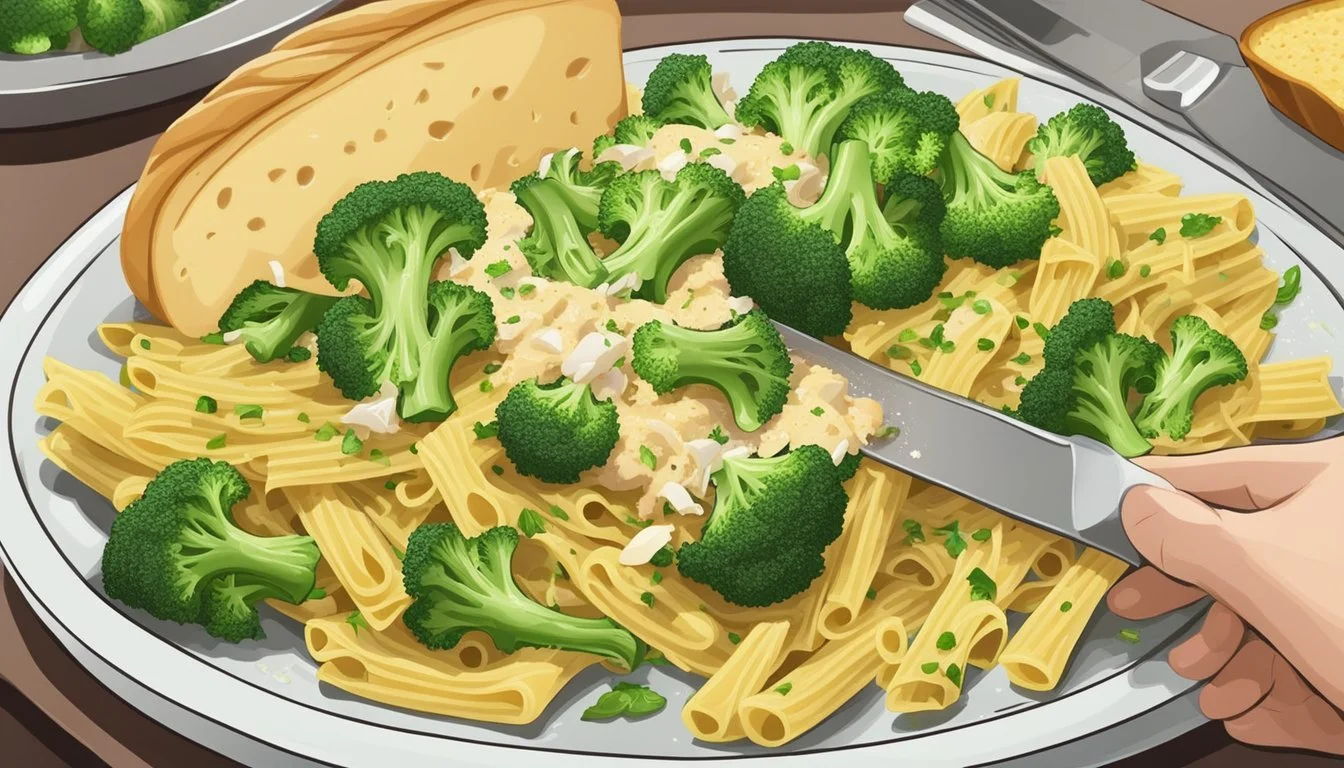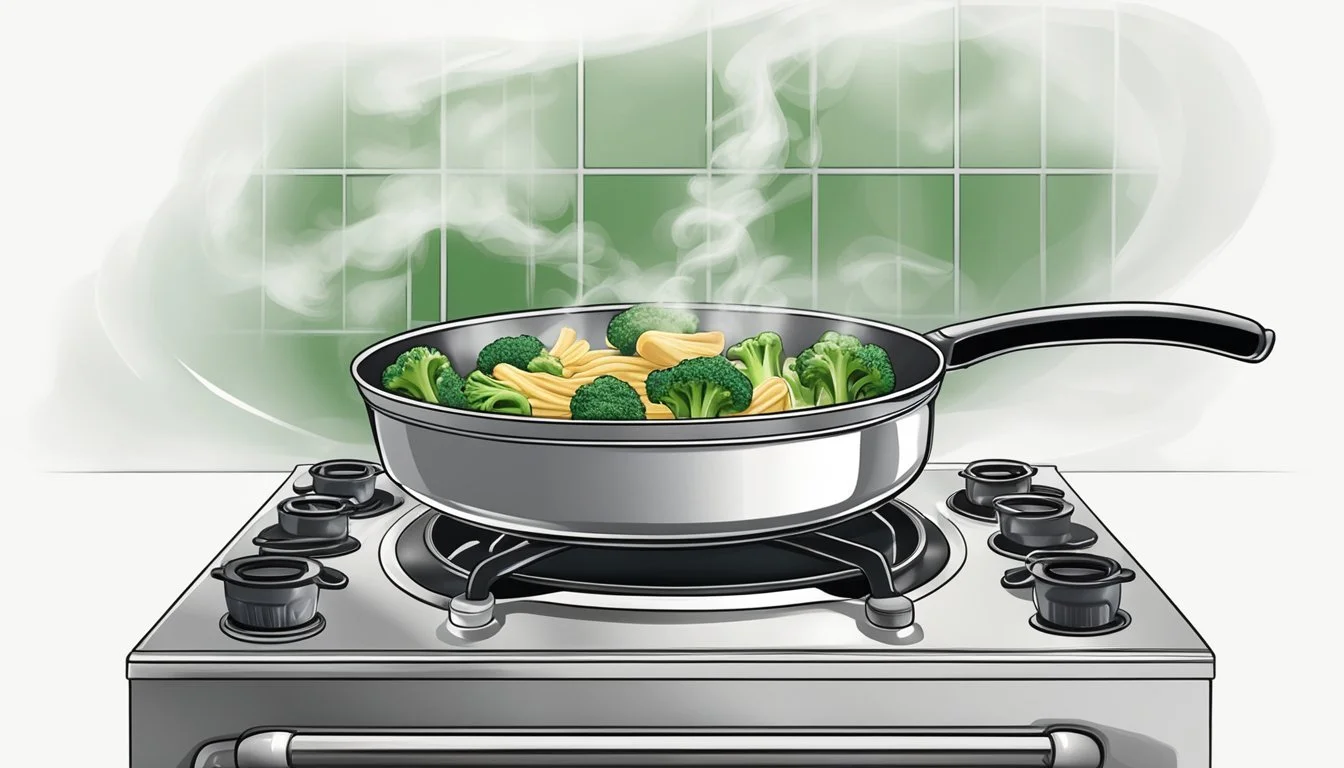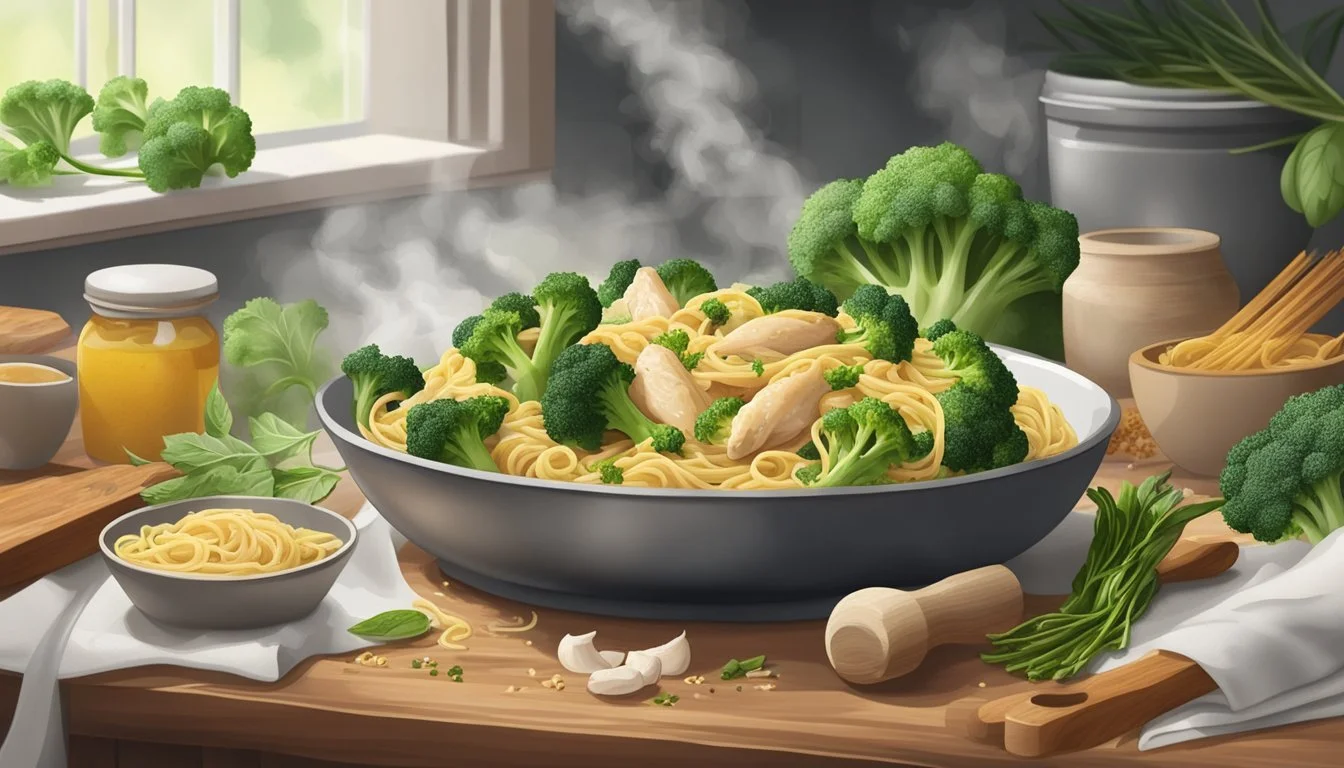How to Reheat Banquet Chicken & Broccoli Pasta for Optimal Flavor
Reheating Banquet Chicken & Broccoli Pasta can be an easy way to enjoy your leftovers without sacrificing flavor or texture. Properly warming up your meal ensures that the chicken remains juicy, and the broccoli retains its fresh taste. To reheat Banquet Chicken & Broccoli Pasta most effectively, it is recommended to use a microwave-safe dish with a bit of added moisture.
Using a combination of water or chicken broth in the reheating process can prevent the pasta from drying out and keep the dish as enjoyable as when it was first cooked. Covering the dish loosely with a microwave-friendly lid helps distribute the heat evenly, ensuring that each bite is warm and delicious.
Occasionally stirring the pasta while reheating can further help in evenly warming all the ingredients. By following these simple tips, anyone can revive their Banquet Chicken & Broccoli Pasta to its original creamy and flavorful state.
Importance of Proper Reheating
Properly reheating Banquet Chicken & Broccoli Pasta is crucial for maintaining its nutrition and ensuring food safety.
Reheating food to the correct internal temperature of at least 165°F is important to kill any harmful bacteria that may have developed during storage. Using a food thermometer can help in accurately measuring the temperature.
Nutrition is preserved by using appropriate reheating methods. High temperatures or prolonged reheating time can degrade nutrients, especially in vegetables like broccoli. Gentle reheating ensures that the vitamins and minerals are retained.
Leftovers should be reheated to mimic the original texture. For example, using an oven-safe dish covered with foil helps retain moisture, preventing the pasta and chicken from drying out.
When reheating leftovers, spacing the food evenly and adding a small amount of liquid, such as water or chicken broth, can keep the dish moist and enhance its flavors.à
Preparation for Reheating
Proper preparation is crucial to ensure your Banquet Chicken & Broccoli Pasta retains its quality and flavor. Key steps include thawing and gathering the necessary reheating equipment.
Thawing Frozen Chicken and Broccoli Pasta
Place the frozen pasta in the refrigerator overnight to thaw it slowly and safely.
If time is limited, use the defrost function on your microwave. Set it to short intervals, checking frequently to prevent partial cooking. If the pasta was not frozen but refrigerated, make sure it is evenly distributed in a microwave-safe or oven-safe dish before reheating.
For best results, leftover chicken should be removed from the bone if applicable. This ensures even reheating and reduces the risk of foodborne illness. Never thaw pasta at room temperature as this promotes bacterial growth.
Gathering Necessary Reheating Equipment
Microwave-Safe Dish: Ideal for quick reheating, ensures even heat distribution. Cover with a damp paper towel or microwave-safe lid to avoid drying out.
Oven-Safe Baking Dish: Preheat oven to 350°F (175°C). The aluminum foil cover will retain moisture. This method typically takes 10-15 minutes, but always check with a food thermometer to confirm it has reached an internal temperature of 165°F.
Using the right equipment ensures that the texture and taste of your leftover pasta remain intact. Adequate preparation reduces reheating time and enhances the dining experience.
Reheating Techniques
Reheating Banquet Chicken & Broccoli Pasta can be done effectively using various methods to ensure it retains its flavor and moisture. The key is to achieve even heating and maintain the dish’s quality.
Oven Reheating Method
The oven method is ideal for those who want to reheat multiple servings evenly.
Preheat the oven to 350°F (175°C).
Place the leftover pasta in a baking dish.
Add a small amount of water or chicken broth to maintain moisture.
Cover the dish with aluminum foil to prevent drying out.
Bake for about 15 minutes, or until the internal temperature reaches 165°F (74°C).
Occasionally stir the pasta halfway through to promote even heating.
Microwave Reheating Method
Using the microwave method is a quick and convenient way to reheat your pasta.
Transfer the pasta to a microwave-safe dish.
Sprinkle a little water to keep the dish moist.
Cover the dish loosely with a lid or microwave-safe wrap.
Microwave on high for 1 to 1½ minutes.
Stir the pasta to ensure even heating, then continue microwaving in 15-second increments until hot.
Always stir between increments to prevent cold spots.
Stovetop Reheating Method
The stovetop method is great for adding extra flavor during reheating.
Add a small amount of olive oil or butter to a saucepan.
Heat the pan over medium-low heat.
Add the pasta to the pan, stirring frequently.
If the pasta seems dry, splash a bit of water or chicken broth.
Continue to cook for 5-7 minutes until the pasta is thoroughly heated.
This method ensures the pasta and chicken are evenly heated and can be enhanced with additional sauce if needed.
Enhancing Flavor and Texture
When reheating Banquet Chicken & Broccoli Pasta, enhancing flavor and texture ensures the dish tastes as good as when it was first made. Adding moisture, adjusting seasonings, and incorporating cheese and other toppings are key elements to focus on.
Adding Moisture and Richness
To prevent the pasta from drying out when reheating, adding a small amount of liquid such as chicken broth or cream can be beneficial. A splash of olive oil or butter can also enhance richness. This keeps the pasta moist and adds a silky texture.
Using about a quarter cup of liquid for each serving can make a noticeable difference. Covering the dish with aluminum foil or a lid while reheating helps to trap the steam, further retaining moisture.
Seasoning Adjustments
As pasta reheats, flavors can sometimes become muted. Garlic, salt, pepper, and Italian seasoning can revive the flavors. A pinch of red pepper flakes can add a subtle kick to the dish.
Adding fresh herbs such as parsley or basil at the end of reheating can brighten the flavors. Taste the pasta and adjust the seasoning as necessary to ensure a balanced and flavorful dish.
Cheese and Toppings
Cheeses like parmesan, mozzarella, and cheddar can be added to enhance both flavor and texture. Grated cheese melts into the sauce, creating a creamy consistency, while shredded cheese adds a satisfying melt.
Sprinkle cheese over the pasta before reheating and cover the dish to help the cheese melt evenly. Toppings such as toasted breadcrumbs or a drizzle of olive oil can also add texture and depth to the final dish.
Final Steps and Serving Suggestions
To achieve the best flavor and texture when reheating your Banquet Chicken & Broccoli Pasta, focus on even heating and consider pairing it with complementary side dishes.
Ensuring Even Heating
Even heating is crucial to avoid cold spots. Use an oven-safe dish and preheat the oven to 350°F (175°C). Cover the dish with aluminum foil to prevent drying out. Heat for 10-15 minutes, checking occasionally with a meat thermometer to ensure the internal temperature reaches 165°F.
If using the stovetop, add a small amount of chicken broth or water to a skillet over medium-low heat. Stir frequently to distribute the heat evenly.
Pairing with Suitable Side Dishes
Complement your reheated pasta with well-matched side dishes. Garlic bread is a classic choice, providing a crunchy contrast to the creamy pasta. A fresh green salad with a light lemon juice and olive oil dressing can add a refreshing balance to the meal.
Other options include roasted or steamed vegetables, such as green beans or asparagus. Sprinkled parsley over your pasta can enhance both the flavor and presentation.
Serving and Enjoying
Once the pasta is reheated uniformly, transfer it to a serving dish. Add freshly chopped parsley and a squeeze of lemon juice to brighten the flavors. Serve with your selected side dishes on individual plates.
Presentation matters – use colorful, appealing dishes to make the meal inviting. Enjoy your reheated Banquet Chicken & Broccoli Pasta hot, ensuring that each bite is flavorful and satisfying.
Storing Leftovers
Following proper storage techniques and reheating methods for Banquet Chicken & Broccoli Pasta ensures food safety and preserves the dish's taste and texture.
Proper Storage Techniques
Store leftovers in airtight containers to maintain freshness and prevent contamination. Use aluminum foil or plastic wrap to cover the dish before placing it in containers.
For refrigeration, ensure the refrigerator is set at 40°F (4°C) or below to slow bacterial growth. Leftovers should be chilled within two hours of cooking to maintain nutritional quality. Label containers with the date to keep track of freshness.
Freezing is ideal for longer storage. Portion the pasta into freezer-safe containers or bags, removing as much air as possible. This minimizes freezer burn and ensures even reheating. Consume frozen leftovers within three months for the best quality.
Reheating Previously Reheated Dishes
To avoid the risk of bacterial growth, reheat leftovers only once. If previously reheated, ensure they reach an internal temperature of 165°F (74°C).
Use an oven or stovetop for even heating. Cover the dish with aluminum foil to prevent drying. Reheat at 350°F (175°C) for about 10-15 minutes, checking to ensure it's thoroughly heated.
Microwave reheating is convenient but may lead to uneven heating. Place the pasta in a microwave-safe dish, cover with a damp paper towel, and heat in short bursts, stirring frequently. This helps maintain the dish's nutrition by preventing overcooking.
Safe Handling of Chicken Dishes
Chicken is a versatile ingredient but requires careful handling to avoid foodborne illnesses.
Always ensure chicken is cooked to an internal temperature of 165°F (74°C). This includes chicken breast, boneless chicken, and chicken thighs. Use a meat thermometer for accuracy.
When dealing with leftover chicken, refrigerate it within two hours of cooking. Use airtight containers to maintain freshness.
Refrigerated leftover chicken should be consumed within four days. Label containers with the date to track storage time.
When freezing leftover chicken, ensure it is wrapped tightly to prevent freezer burn. Use within three months for best quality.
Always reheat chicken to an internal temperature of 165°F (74°C). Whether it's chicken breast or chicken thighs, this helps kill any bacteria.
Use appropriate methods like the oven or microwave to reheat. For the oven, preheat to 350°F, cover the dish with foil, and check the temperature.
Never leave cooked chicken at room temperature for more than two hours. In hot environments above 90°F (32°C), this reduces to one hour.
These steps ensure your dishes are safe and delicious every time.
Nutritional Aspects of Chicken & Broccoli Pasta
Chicken & broccoli pasta is a well-balanced dish that combines lean protein, vegetables, and carbohydrates.
Chicken provides a significant source of protein which helps in muscle repair and maintenance, while being relatively low in fat.
Broccoli florets are rich in vitamins C and K, fiber, and antioxidants. These nutrients support immune function, bone health, and digestion.
Pasta, often made from durum wheat, contributes carbohydrates for energy. Whole grain options can add extra fiber and nutrients.
Cream sauce or alfredo sauce used in many chicken and broccoli pasta recipes can be high in calories and fat. Using alternatives like half-and-half or reduced-fat milk can lower fat content.
Here's a nutritional breakdown for a typical serving:
Nutrient Amount per Serving (approx.) Calories 450-600 kcal Protein 30-35 grams Carbohydrates 50-60 grams Fat 15-25 grams Fiber 4-6 grams Vitamin C 70-100% DV Calcium 20-30% DV
Some variations add heavy cream which increases the richness and fat content.
A balanced serving includes plenty of broccoli, a moderate amount of pasta, and a controlled portion of sauce, ensuring a nutritious meal without excessive calories.
Using reduced-fat substitutes in the sauce can help manage the overall nutrition profile.







